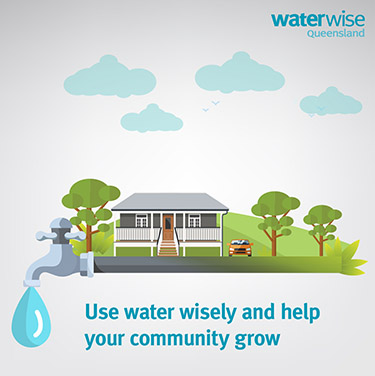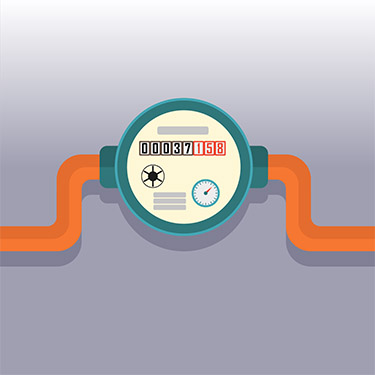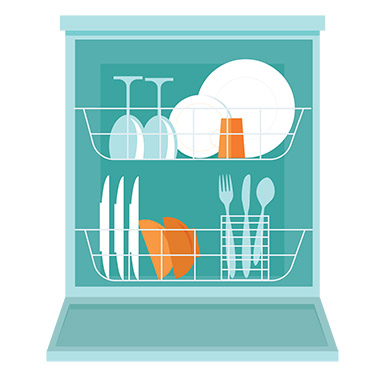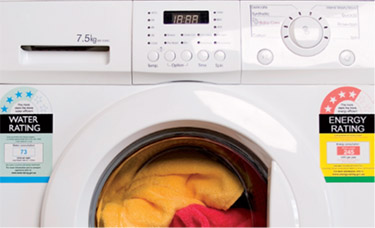From the source to your tap, being waterwise starts with you!
Water typically is collected from a natural water source and then goes through pumps, treatment and pipes before it is delivered to your home. Find out more about water’s journey (PDF, 1.0MB). Looking after the water source is important, and so is using water wisely. Ensuring you are waterwise in your home (PDF, 185KB), as well as in the garden (PDF, 564KB) and in the workplace, can help safeguard our precious water supplies for the future.
One of the top ways to be waterwise is by having water efficient fittings and appliances (i.e. with a Water Efficiency and Labelling Standards (WELS) Scheme star rating of 3 stars and higher). A 4 star WELS rating washing machine will save more than 3 buckets of water per load compared to a 3 star washing machine. Another top tip on being waterwise is to do a water audit to identify any leaks in your home.
By using water wisely you will save:

Knowing how much water you use, and understanding the ways you use water can help you find ways to become more waterwise. Check out our water savings tips for your home (PDF, 519KB) or do a simple waterwise quiz (PDF, 174KB) to help find ways to become more waterwise.
There are a few simple ways to find out how much water your household uses:

Once you know how much water you use, contact your local council to find out whether there is a voluntary water target in your local area. If one doesn’t exist, set your own! Your aim is to use less water, so make sure you set an achievable target.
There are many ways to use water efficiently in the kitchen.

Most homes use more water in the bathroom than in any other part of the house. It’s a great place to start looking for ways to save water.
More than a quarter of your household water use is typically in the shower.

Within a typical household over 10% of water used inside the home is flushed down the toilet. The following tips can reduce the amount of water used and in turn help reduce your water bills.

You can reduce water use in baths and basins – try these tips!
Selecting the right washing machine is the best way to save water and energy in the laundry. Choose a washing machine with a 4 star WELS Scheme rating or better; you could use up to 50% less water!
There are a number of other ways you can save water in the laundry.

You can reduce your water use by changing the way you use water outside. A few simple one-off modifications to fittings and appliances can improve water efficiency.
Consider installing a rainwater tank (PDF, 3.4MB) for garden and outdoor use and have it plumbed to your washing machine and toilets. The benefits from a rainwater tank will be influenced by the weather patterns in your area. Read more tips on waterwise gardening.
As a pool and spa owner, you can reduce water use in several ways.

Many household leaks are not easily detected and can lead to high water bills.
You should check your water meter regularly (monthly or 3-monthly) to monitor and understand how much water you use. This will also help locate leaks early, saving you both water and money. A water audit (PDF, 741KB) of your household can also tell you how much water you use and if you might have a leak.

If you do not regularly check your water meter, the first sign of a water leak might be a higher than normal water bill.
A large amount of water can be lost due to leaking pipes and dripping taps. One slowly dripping tap can waste more than a bucket of water a week, while a visibly leaking toilet can waste up to 18 buckets of water a day.
Make sure you turn all your taps off properly; check for leaks and repair taps and keep all water fittings and equipment in good condition.
Read further information about detecting leaks and reading your water meter (PDF, 727KB).
You are responsible for installing and maintaining any plumbing that is on your property (i.e. pipes and fittings on your property side of the water meter connection point). You are also responsible for all water used on your property, including water leaks. A concealed leak is a leak that is hidden from view as they are underground or in the internal plumbing, for example from a broken or cracked water pipe that is within a wall of your house. Regularly reading your water meter can help identify if you have a concealed leak. Read about doing a water audit (PDF, 741KB).
If you would like to discuss your water charges in relation to a concealed leak you should contact your water service provider.
On 2 August 2023 the Queensland Government announced a remission scheme to provide relief to customers facing large water bills as a result of a concealed leak on their property.
The remission scheme will help eligible customers with the financial impact of a concealed leak and help prevent them from falling into financial hardship by providing a credit on the excess state bulk water charge of 100 per cent for eligible pensioners and 70 per cent for all other eligible customers.
This is in addition to the remission that South East Queensland (SEQ) water service providers offer under the South East Queensland customer water and wastewater code (PDF, 727KB). A concealed leak remission is a reduction in the amount payable on your water bill to offset the cost of the water lost due to a concealed leak.
Waterwise home, 28 Aug 2023, [https://oss-uat.clients.squiz.net/environment/water/residence/use/home]
This document is uncontrolled when printed. Before using the information in this document you should verify the current content on https://oss-uat.clients.squiz.net/environment/water/residence/use/home.